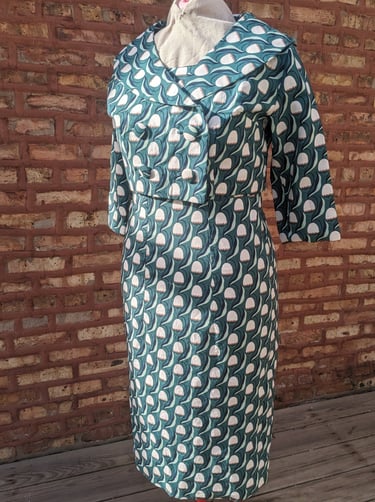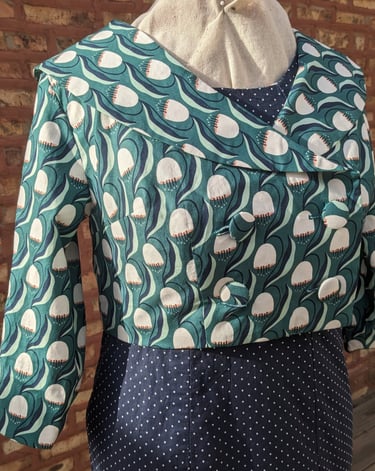Why Aren’t There More Garments Reversible?
12/13/20243 min read
I love a reversible garment. You have twice the opportunity to express yourself through the piece without taking up double the space in your closet. You feel like you’re winning getting twice the wear out of your clothing. It feels good to have options and possibilities!
I created my first reversible dress last year. I went in with my eyes wide open to the challenges of making a reversible dress, discovered a couple more unexpected hurdles, but in the end was really happy with how the dress turned out. I was able to deliver a versatile, joyful dress.




So if reversible garments are so great, why are there more of them? Well, a bunch of reasons.
The biggest, and most obvious, is how do you close it? This is why most reversible dresses are wrap dresses. It’s easy to create ties on both sides and just wrap either side out. But other closure types are hard to create in a comfortable and clean way. if you use buttons you’ll need buttons on both sides of the fabric, which could be uncomfortable to wear. If you use a zipper, you’ll need a reversible one, which comes in a grand total of 3 colors. Lacing is an option as long as you’re okay with your bare skin being exposed between the laces. To put in plainly, figuring out the construction of the garment to allow it to be reversible can be quite a brainteaser.
Another factor that impacts your design? The added bulk. You’re doubling the thickness of your garment, which will probably not work well for a slinky dress or a light flowy top. This is part of the reason you’ll see some winter coats are reversible, but hardly ever see a reversible top or skirt; who cares if you add a little extra bulk in a coat, isn’t that the point of a coat anyway?
It’s not just the design that is a consideration though. If you’re adding fabric, you’re also adding cost and extra labor (also known as extra cost). Making a dress reversible means almost double the material. But, when I created my reversible dress it was the extra labor that was the biggest hit. Not only do both sides of the garment have to be presentable, which means more hand sewing and no place to hide seams, but the importance of precision balloons. Normally in sewing there is a little wiggle room for error. If your hem is misaligned by a ¼ of an inch, you can easily even it out in your seam allowance. In a reversible garment the two sides have to match perfectly. Hemlines, darts, and seams all need to line up. If they don’t match, the garment isn’t going to lay flat.
In off the rack clothing, all of this extra effort and cost is misaligned with the fast fashion dominated world we live in. Clothes are thought of as short term disposable objects. The average garment gets worn just 7 times. Fast fashion companies are looking to bring down costs and keep the revolving door of clothing purchases spinning. A reversible garment, which is meant to be versatile and create more possibilities in your closet, is the anthesis of this speedy flywheel.
Right Side Out is the polar opposite of fast fashion. We live in the slow fashion world. We’re about being timeless, long lasting, thoughtful made for women, and joyful in our style. I started this saying "I love a reversible garment" so it's no secret what I think. The excitement of a reversible garment and the versatility it gives women is right up the Right Side Out alley. I’m not sure what the next reversible project will be, but I can’t wait to create it.

